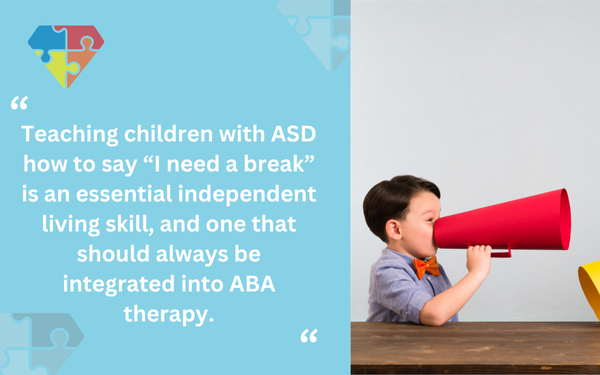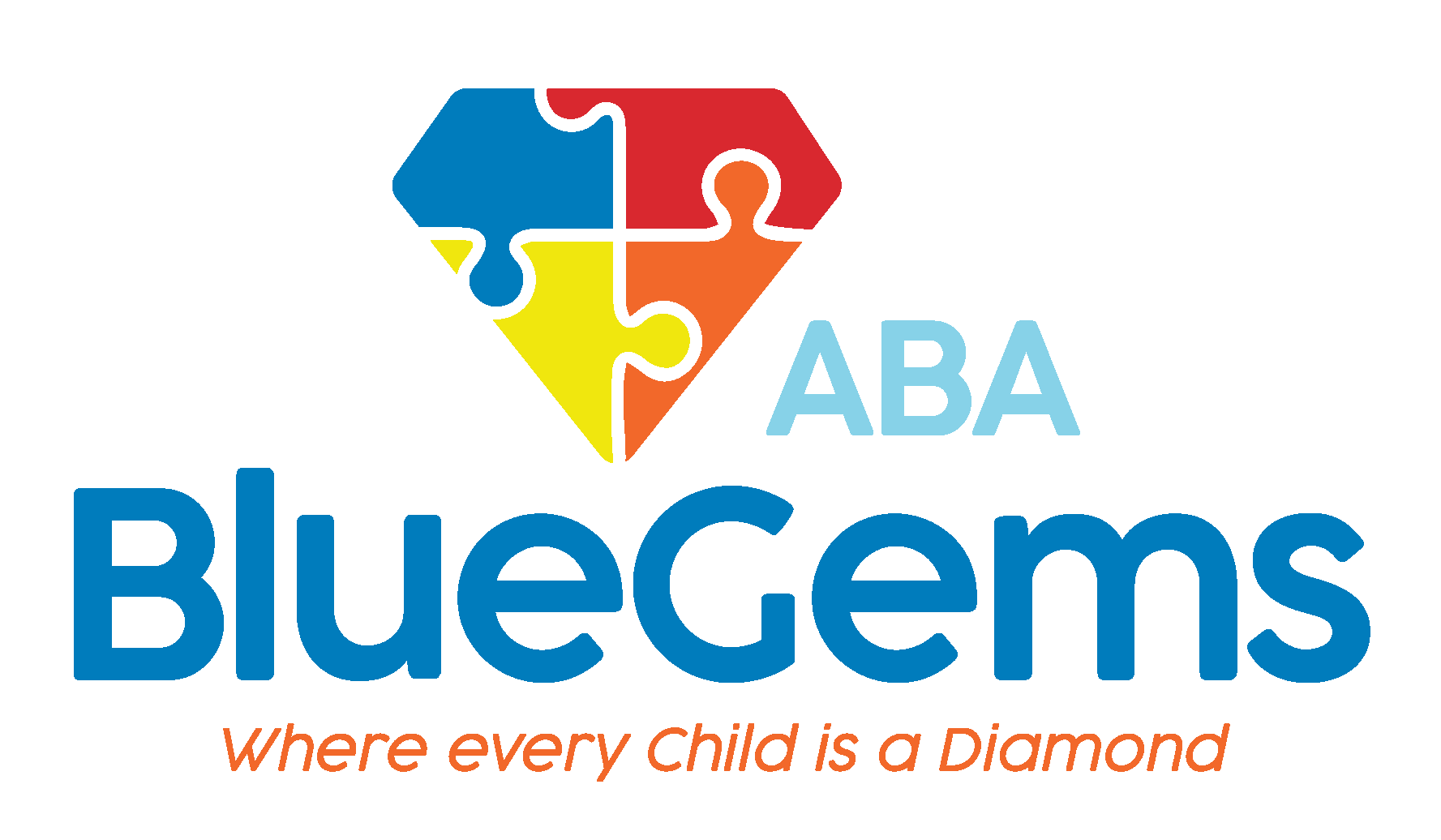Teaching Children to Say ‘I Need a Break’
Everyone needs a break from time to time. Being able to step away from what one is doing if it’s causing stress and anxiety or if it’s becoming overwhelming and confusing is essential in calming down, centering oneself and allowing your body and brain to refresh.
Many people have the ability to recognize when they need a break, and then either take it themselves or request that they take one from others.
Children with autism spectrum disorder (ASD) may struggle with this, though, just like they might with other forms of communication. Being able to teach children to recognize that they need a break and then communicate that fact is important to help promote independence, help with self-regulation and allow them to refresh.
That’s why this is often a focus of applied behavior analysis (ABA therapy) treatment. In this article, we’ll discuss how ABA therapy can teach children to say “I need a break.”
Key Takeaways
- Breaks are essential for self-regulation, especially for children with autism.
- ABA therapy focuses on teaching children to request breaks through both verbal and non-verbal methods.
- Functional Communication Training (FCT) helps in building verbal communication for requesting breaks.
- Immediate reinforcement of break requests builds trust and encourages consistent communication.
Table Of Contents
Why Are Breaks Important?
As mentioned, breaks are important for everyone. They allow us to step away from a situation, clear our mind of what’s bothering us and then re-approach a situation with more clarity.
Breaks give our brain and bodies a chance to recharge, if you will, so that we can go about the rest of our day with confidence and control.
This is even more so for children with autism.
Breaks help children on the autism spectrum avoid frustration, stay on-task when they need to pay attention and focus, and prevent meltdowns from happening. They also promote self-regulation, allowing them to manage their own emotions and step away when they might be feeling stressed, anxious and/or overwhelmed.
Teaching children with ASD how to say “I need a break” is an essential independent living skill, and one that should always be integrated into ABA therapy.

How to Identify When Children with Autism Need a Break
In order to teach children to say they need a break, the ABA therapist must first work to identify the warning signs that a break is needed. In this regard, they are looking for precursor behaviors that suggest a break is needed — and that a meltdown or other negative behavior may soon follow if a break is not taken.
These signs will of course be different for each child.
That being said, children with ASD often start to become frustrated when they need a break. This could exhibit itself in the form of the child raising their voice, getting red in the face or moving their arms or legs rapidly.
They might start to engage in other self-stimulatory behaviors as they look to center themselves and regulate their emotions.
Paying attention to each child’s unique warning signs is vital to effectively teaching them how to request a break.
How to Teach Children to Say ‘I Need a Break’
The ultimate goal in this realm would be to teach the child to verbalize that they need a break. However, this is not always realistic, at least not at first.
ABA therapists should have many tools and strategies at their disposal to teach children to request a break, and what they use should be based on the child’s preferences, needs and abilities.
For children who aren’t able to verbalize such a request, having a “break card” can be very effective. Printed on this card might be a picture of a stop sign and the word “break.”
This visual cue should be readily available for the child, and they can be taught to pick it up and show it to the therapist when they feel they need a break.
This can progress to verbalizing the phrase “I need a break” or “I don’t want to” eventually, which can be done using Functional Communication Training (FCT). FCT can be effective in helping children say they need a break after watching the therapist model the behavior, using the visual cards and then saying the phrase out loud.
Just as important as teaching how to request a break is honoring that request. When children successfully request the break, then the ABA therapist should immediately allow them to take that break.
Doing so will show the child that their requests are being respected and valued, which will lead to trust being built between them and the therapist. When done in a controlled manner, giving breaks of different lengths based on different prompted requests, children can learn to more effectively request breaks.
Blue Gems ABA Teaches Children to Advocate for Themselves
Every person needs a break from time to time, but children with autism may not have the ability to request that they need a break. That’s why it’s so important for ABA therapists to teach children this skill, whether it’s through visual cards, verbal requests or a combination of the two.
At Blue Gems ABA, our team of experienced therapists work hard to teach children how to advocate for themselves, including requesting a break when they need it. We do so by catering all treatment plans to each individual child’s unique strengths, challenges and preferences, which helps them become more successful.
To learn more, please contact us today.
Frequently Asked Questions
- Why is it hard for children with autism to request a break?
They may struggle with communication or recognizing when they are becoming overwhelmed. - What are precursor behaviors to look for?
Increased movement, vocal escalation, or self-stimulatory behavior can indicate a need for a break. - What if a child cannot speak?
Non-verbal tools like break cards or sign language can be used as alternatives. - How long should a break last?
Length can vary based on individual needs; short breaks can still be effective in helping reset emotions.




